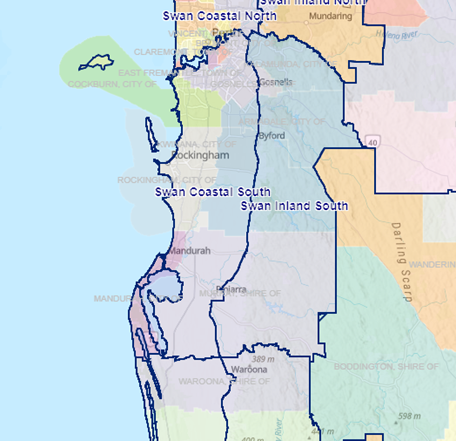Fire Bans
Total Fire Bans
Total Fire Bans (TFB) are declared by the Department of Fire and Emergency Services (DFES) due to certain weather conditions or when widespread fires are seriously stretching firefighting resources.
Up to $25,000 fine and/or a 12-month jail term for non-compliance
During a TFB
To keep up to date with Total Fire Bans (TFB) declared please refer though to either:
ABC720AM Local Radio and the Department of Fire and Emergency Services website emergency.wa.gov.au
The lighting of any fires in the open air and any other activities that may start a fire are prohibited, including:
- All open air fires for the purpose of cooking or camping - wood fuel barbeques, candles and pizza ovens
- Incinerators, welding, grinding, soldering or gas cutting, angle grinders and lawnmowers
Exemptions may be granted by DFES through the following link:
Total Fire Ban Exemption Application Form (Information Sheet - Editable) (dfes.wa.gov.au)
Harvest and Vehicle Movement Bans
Harvest and Vehicle Movement Bans (HVMB) in the district are imposed by local government under the Bush Fires Regulations 1954 (Regs) when the local Fire Behaviour Index reaches 40 or as otherwise permitted under the Regs.
A HVMB may be imposed for any length of time but is generally imposed for ‘heat of the day’ periods and may be extended or revoked as weather conditions change.
During a HVMB
The use of engines, vehicles, plant and machinery are prohibited, in order to mitigate the associated risk of causing or contributing to the spread of a bushfires.
Who issues a Harvest and Vehicle Movement Ban (HVMB)?
Your local government issues harvest and vehicle movement bans (HVMB) to restrict engine, vehicle, plant, equipment, and machinery use. This reduces the risk of bushfires during fire weather conditions.
Regulations 24C (during a total fire ban) and 38A (during restricted and prohibited burning times) of the Bush Fires Regulations 1954 allow local governments to issue HVMBs.
In HVMBs without a total fire ban, the local government lists what is banned under regulation 39C. Please consult the local government for specifics as what is prohibited will vary.
What is A HVMB?
Type 1: Regulation 24C Bush Fires Regulations 1954.
Apply when a total fire ban has been declared, they must be imposed when the fire behaviour index is or exceeds 40 or when the Bush Fire Control Officer deems the use or operation of an engine vehicle, plant, equipment, or machinery powered by an internal combustion engine on land containing vegetation (off-road) is likely to start a bush fire. HVMBs are usually issued during the day's highest risk period.
Type 2: Regulation 38A Bush Fires Regulations 1954.
Apply during restricted and prohibited burning times and where no total fire ban is declared. If the Chief Bush Fire Control Officer believes engines, vehicles, plant, or machinery may cause or be conducive to the spread of a bushfire.
How long does a HVMB last?
The HVMB is usually in force during the hottest part of the day, but local governments can extend or cancel the ban if weather conditions change.
What can't I do when a HVMB is issued during a total fire ban?
The public is already prohibited from the following activities during a total fire ban, but when a HVMB is issued, business, industry, local governments, and agriculture are prohibited from operating anything operated by an internal combustion engine on land with vegetation, for example:
- Harvesting
- Driving cars, ATV’s or motorbikes
- Operating drill rigs/machinery
- Clearing vegetation including clearing as part of road construction
- Slashing road verges
- Lawn mowing services by businesses or local governments.
For more information about Total Fire Bans and Harvest Vehicle Movement Bans click here
To register for SMS Alerts on Harvest Vehicle Movement Bans (HVMB) please complete the following form:
Fire Danger Ratings
It is important to keep abreast of your area's Australian Fire Danger Rating (AFDR) by monitoring local conditions and keeping in-the-loop. For more information about fire danger ratings click here.
What is the AFDRS
The Australian Fire Danger Rating System (AFDRS) Program is redesigning the forecasting of fire danger in Australia. The AFDRS is a project of national significance being developed collaboratively by each state and territory, and the Commonwealth government. It aims to improve public safety, reduce the impacts of bushfires and better support the community with nationally consistent ratings and messaging.
Understanding Australian Fire Danger Ratings
Catastrophic 100+
Leave Bushfire Risk Areas
Unsafe for firefighters and community. Without initial attack success, likelihood of very large fire development is very high. High probability of loss of life and property.
Extreme 50 - 99
Take Action Now
Defensive suppression strategies. High levels of threat to life/property. Safety of firefighters and community paramount.
High 24 - 49
Be Ready to Act
Initial attack success critical to prevent large fire development. Defensive suppression strategies.
Moderate 12 - 23
Plan and Prepare
Most bushfires in this category. Fires typically suppressed with direct, parallel or indirect attack.
How is the AFDRS different from our current system?
The current Fire Danger Rating System is largely based on 60-year-old science applied on a large scale. New technology and research have greatly improved our ability to more accurately predict fire behaviour and the potential threat to the community.
Shire of Murray fire weather district
- Swan Coastal South
- Swan Inland South

To check the current fire danger rating in your area, visit Western Australia Fire Danger Ratings (bom.gov.au)
Latest alerts:
dfes.wa.gov.au
bom.gov.au/wa
emergency.wa.gov.au
Sign up to SMS Alerts